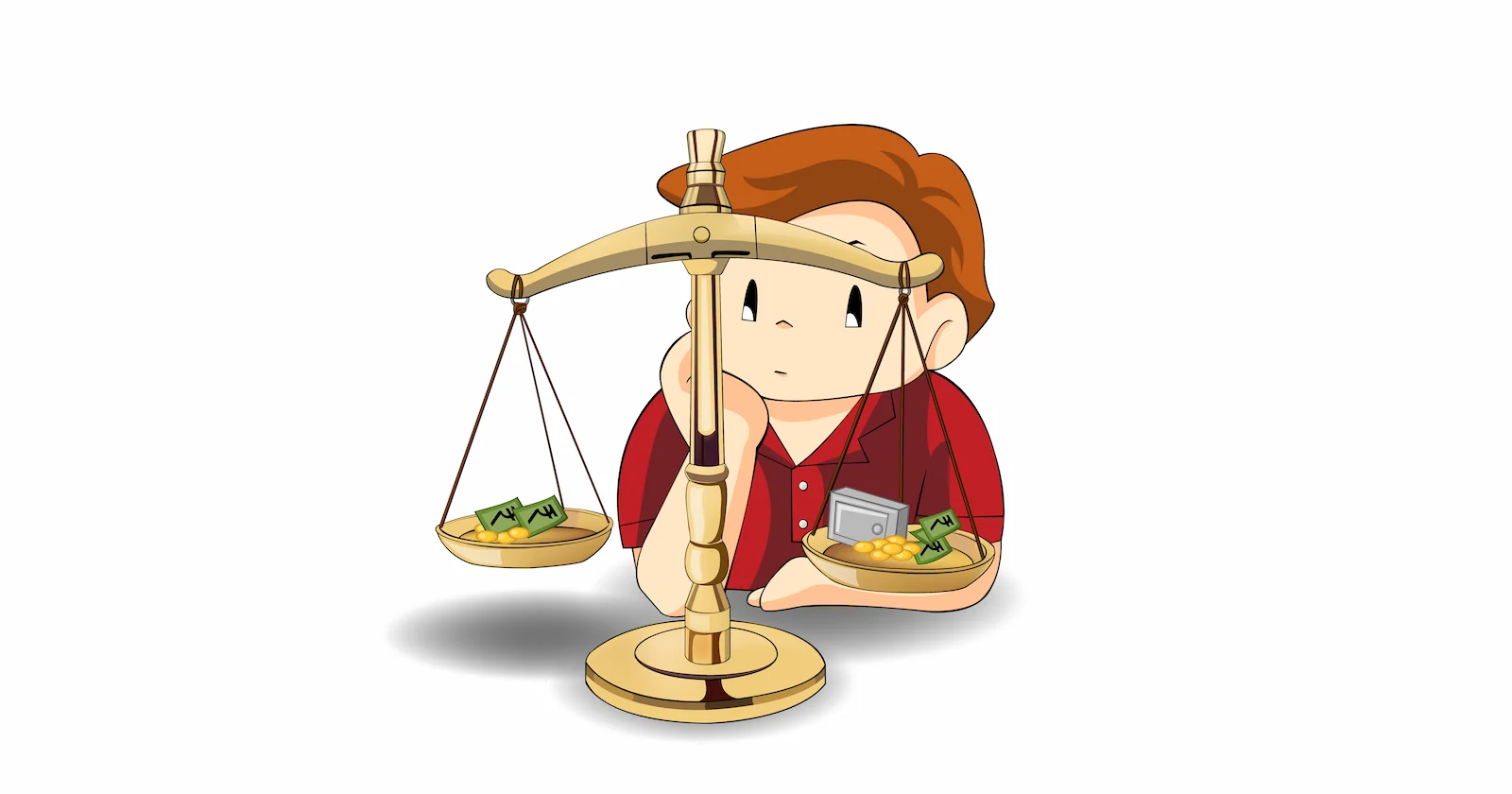What is the Income Tax Slab?
Individual taxpayers in India are taxed based on a slab system. Income tax slabs refer to different tax rates applied to different income ranges. These tax rates increase as the taxpayer's income increases. Typically, this type of taxation allows for progressive and fair tax systems. Every year, the tax slab structure changes during the Union budget.
"Individual taxpayers" can be classified into three categories as per Indian Income Tax:
- Individuals under the age of 60, including residents and non-residents
- Resident Senior citizens (60 to 80 years of age)
- Resident Super senior citizens (aged more than 80 years)
Income Tax slabs & Rates as Per Old Regime FY 2022 - 23
Given below are the three tables for the alternative Income Tax Slabs :
Income Tax Slab for Individual who are below 60 years
| Income Tax slab | Tax Rate |
|---|---|
|
Up to ₹ 2.5 lakh |
Nil |
|
Above ₹ 2.50 lakh - ₹ 5.00 lakh |
5% of the total income that is more than ₹ 2.5 lakh + 4% cess |
|
Above ₹ 5 lakh - ₹ 10 lakh |
20% of the total income that is more than ₹ 5 lakh + ₹ 12,500 + 4% cess |
|
Above ₹ 10 lakh |
30% of the total income that is more than ₹ 10 lakh + ₹ 1,12,500 + 4% cess |
Individuals who have an income up to ₹ 5 lakh are eligible for tax deductions under Section 87A
Example - Given below is an example of how income tax is calculated under old regime for 3 individuals (A, B, and C):
| Components | A | B | C |
|---|---|---|---|
|
Annual Salary (₹) |
5,00,000 |
10,00,000 |
15,00,000 |
|
Standard Deduction (₹) |
50,000 |
50,000 |
50,000 |
|
Tax deductions under Section 80C of the Income Tax Act (₹) |
70,000 |
1,50,000 |
1,50,000 |
|
House Rent Allowance deductions |
92,000 |
100,000 |
1,50,000 |
|
Gross total income after deductions (₹) |
2,88,000 |
7,00,000 |
11,50,000 |
|
Computation of tax on the gross total income |
|||
|
Up to ₹ 2.5 lakh (₹) |
Nil |
Nil |
Nil |
|
From ₹ 2,50,001 to ₹ 5 lakh (₹) |
1,900 |
12,500 |
12,500 |
|
From ₹ 5,00,001 to ₹ 10 lakh (₹) |
40,000 |
1,00,000 |
|
|
Above ₹ 10 lakh (₹) |
45,000 |
||
|
Total Tax (₹) |
1,900 |
52,500 |
1,57,500 |
|
Deductions under Section 87A (₹) |
1,900 |
Nil |
Nil |
|
Additions of cess (₹) |
Nil |
2,100 |
6,300 |
|
Total tax that is payable (₹) (Total Tax + cess – Deductions under Section 87A) |
Nil |
54,600 |
1,63,800 |
Income Tax Slab between 60-80 years (Senior Citizen)
| Income Tax slabs | Tax Rate |
|---|---|
|
Up to ₹ 3 lakh |
Nil |
|
Above ₹ 3.00 lakh - ₹ 5.00 lakh |
5% of the total income that is more than ₹ 3 lakh + 4% cess |
|
Above ₹ 5.00 lakh - ₹ 10 lakh |
20% of the total income that is more than ₹ 5 lakh + ₹ 10,000 + 4% cess |
|
Above ₹ 10 lakh |
30% of the total income that is more than ₹ 10 lakh + ₹ 1,10,000 + 4% cess |
Example: Given below is an example of how income tax is calculated for 3 individuals (A, B, C):
| Components | A | B | C |
|---|---|---|---|
|
Annual Salary (₹) |
5,00,000 |
10,00,000 |
15,00,000 |
|
Standard deduction (₹) |
50,000 |
50,000 |
50,000 |
|
Tax deductions under Section 80C of the Income Tax Act (₹) |
70,000 |
1,50,000 |
1,50,000 |
|
House Rent Allowance deductions |
92,000 |
100,000 |
1,50,000 |
|
Gross total income after deductions (₹) |
2,88,000 |
7,00,000 |
11,50,000 |
|
Computation of tax on the gross total income |
|||
|
Up to ₹ 3 lakh (₹) |
Nil |
Nil |
Nil |
|
From ₹ 3,00,001 to ₹ 5 lakh (₹) |
Nil |
10,000 |
10,000 |
|
From ₹ 5,00,001 to ₹ 10 lakh (₹) |
40,000 |
100,000 |
|
|
Above ₹ 10 lakh (₹) |
45,000 |
||
|
Total Tax (₹) |
Nil |
50,000 |
1,55,000 |
|
Deductions under Section 87A (₹) |
Nil |
Nil |
Nil |
|
Additions of cess (₹) |
Nil |
2,000 |
6,200 |
|
Total tax that is payable (₹) |
Nil |
52,000 |
1,61,200 |
Income Tax Slabs for individual above 80 years (super senior citizen)
| Income Tax slabs | Tax Rate |
|---|---|
|
Up to ₹ 5 lakh |
Nil |
|
Above ₹ 5 lakh - ₹ 10 lakh |
20% of the total income that is more than ₹ 5 lakh + 4% cess |
|
Above ₹ 10 lakh |
30% of the total income that is more than ₹ 10 lakh + ₹ 1,00,000 + 4% cess |
Example: Given below is an example of how income tax is calculated for 3 individuals (A, B, C):
| Components | A | B | C |
|---|---|---|---|
|
Annual Salary (₹) |
5,00,000 |
10,00,000 |
15,00,000 |
|
Standard deduction (₹) |
50,000 |
50,000 |
50,000 |
|
Tax deductions under Section 80C of the Income Tax Act (₹) |
70,000 |
1,50,000 |
1,50,000 |
|
House Rent Allowance deductions |
92,000 |
100,000 |
1,50,000 |
|
Gross total income after deductions (₹) |
2,88,000 |
7,00,000 |
11,50,000 |
|
Computation of tax on the gross total income |
|||
|
Up to ₹ 5 lakh (₹) |
Nil |
Nil |
Nil |
|
From ₹ 5,00,001 to ₹ 10 lakh (₹) |
40,000 |
1,00,000 |
|
|
Above ₹ 10 lakh (₹) |
45,000 |
||
|
Total Tax (₹) |
Nil |
40,000 |
1,45,000 |
|
Deductions under Section 87A (₹) |
Nil |
Nil |
Nil |
|
Additions of cess (₹) |
Nil |
1,600 |
5,800 |
|
Total tax that is payable (₹) |
Nil |
41,600 |
1,50,800 |
For domestic companies, the tax-slabs depend on the turnover, and it is mentioned below:
| Turnover | Tax Rate |
|---|---|
|
Turnover or Gross Receipt in previous year 2018-19 not exceed 400 Crores |
25% |
|
Turnover or Gross Receipt in previous year 2018-19 exceed 400 Crores andnot opted for 115BA, 115BAA, 115BAB |
30% |
In addition to the tax rate listed above, a surcharge and cess are also charged. Details on the surcharge and cess that will be imposed are provided below:
- Cess - 4% of corporate tax
- Surcharge -The surcharge that would be applied is 7% if the taxable income is greater than ₹ 1 crore but less than ₹ 10 crore. If the taxable income exceeds ₹ 10 crore, a 12% surcharge would be applied.
- Non Resident Indians -There is a maximum basic exemption limit of ₹ 2.5 lakh for non-resident Indians, regardless of their age.
Important Points
- Cess has increased from 3% to 4% with the amendment coming in Budget 2018.
Surcharge rates applicable to Individuals or HUF
A surcharge is applied to the amount of income tax when a taxpayer's income exceeds the thresholds outlined by the Income Tax Department. The following prices for a surcharge are provided:
For Assessment Year 2022-23
| Range of Income | Applicable Rate of Surcharge |
|---|---|
|
₹ 50 lakhs to ₹ 1 crore |
10% |
|
₹ 1 crore to ₹ 2 crore |
15% |
|
₹ 2 crore to ₹ 5 crore |
25% |
|
₹ 5 crore to ₹ 10 crore |
37% |
|
More than ₹ 10 crore |
37% |
For Assessment Year 2023-24
| Range of Income | Applicable Rate of Surcharge |
|---|---|
|
₹ 50 lakhs to ₹ 1 crore |
10% |
|
₹ 1 crore to ₹ 2 crore |
15% |
|
₹ 2 crore to ₹ 5 crore |
25% |
|
More than ₹ 5 crore |
37% |
Deductions and Exemptions Available under the Old Tax Regime
Because of a mix of exclusions and deductions, your taxable income may be affected by a substantial amount. So, in order to maximise your earnings, savings, and assets each year and keep your taxable income to a minimal, tax planning is essential.
Over the years the government, through addition of clauses to the Income Tax Act, has given Indian taxpayers over 70 exemptions and deduction options through which they can bring down their taxable income and hence pay less.
While exemptions are part of your salary, like the House Rent Allowance (HRA) and Leave Travel Allowance (LTA), deductions allow you to lower your tax amount by investing, saving or spending on specific items. The biggest section for deduction is Section 80c through which you can bring down your taxable income by ₹ 1.5 lakh. Apart from this, there are several other sections that let you take tax deductions on things ranging from interest on your loans (home and education) to premiums you pay for health insurance.
| Deductions | Exemptions |
|---|---|
|
Public Provident Fund |
House Rent Allowance |
|
Equity Linked Savings Scheme (ELSS) |
Leave Travel Allowance |
|
Employee Provident Fund |
Mobile and Internet Reimbursement |
|
Life Insurance Premium |
Food Coupons or Vouchers |
|
Principal and Interest component of Home Loan |
Company Leased Car |
|
Children Tuition Fees |
Standard Deduction |
|
Health Insurance Premiums |
Uniform Allowance |
|
Investment in NPS |
|
|
Tuition fee for Children |
- |
|
Saving Account Interest |
- |
Conclusion
By forcing investments in specialised tax-saving mechanisms, the old income tax regime gradually inculcated in people a culture of saving. It encourages saving for upcoming occasions like marriage, education, property purchases, medical expenses, etc.The taxing process is influenced by a variety of variables. Please feel free to contact a private tax consultant.





Comments